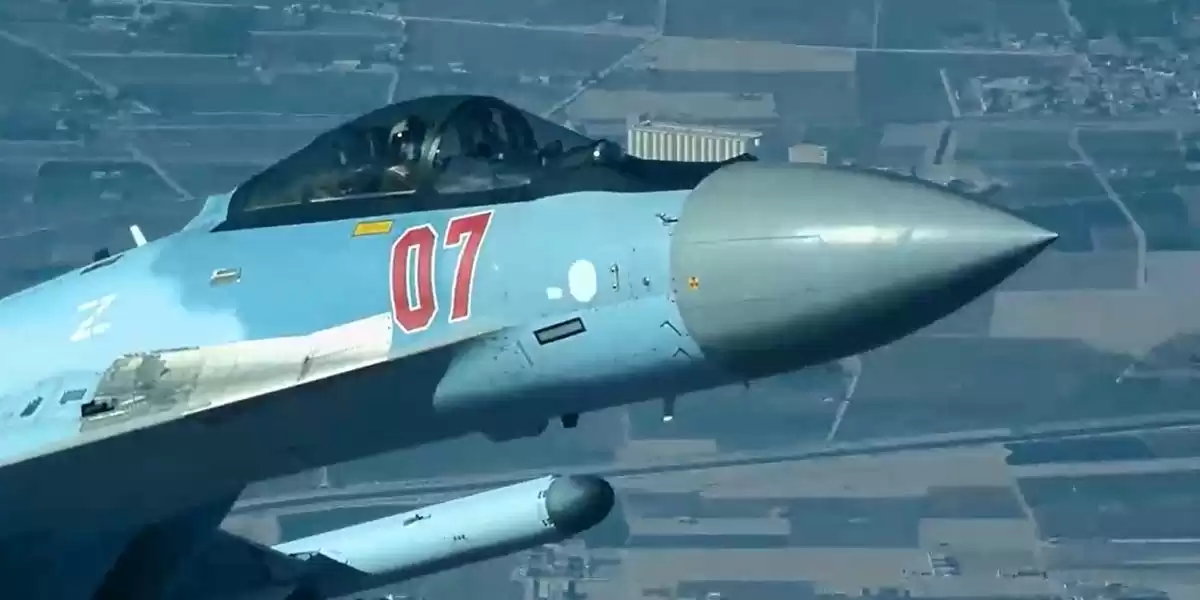'Russian and Chinese Pilots Seek "Batting Practice" Against the US, Top Commanders Report'
Russian and Chinese jets have been increasingly challenging US aircraft in encounters that reflect heightened tensions and a willingness to challenge the US.
In recent months, there has been a surge in encounters between Russian and Chinese jets and US aircraft in various hotspots around the world. These incidents reflect a growing willingness on the part of Russia and China to challenge the US, especially amid heightened tensions between the countries. US military commanders have highlighted several dangerous incidents, including a collision between a Russian jet and a US MQ-9 drone over the Black Sea in March. In July, there were multiple instances of "unsafe and unprofessional behavior" by Russian jets around US drones and manned aircraft over Syria. The Pentagon also released photos and videos in mid-October showing "coercive and risky" intercepts of US aircraft by Chinese jets over the past two years.
According to Gen. Mark Kelly, head of Air Combat Command, the nature and frequency of these interactions represent a new development. Just five years ago, it was uncommon for US and Chinese fighters to interact in exercises, or for US and Russian fighters to merge on a regular basis over Syria. Kelly suggests that there are three main reasons for this shift. Firstly, Russia and China want to test their capabilities against the best in the world. Secondly, they are challenging the post-World War II rules-based construct that has governed international relations. Lastly, they feel confident in their ability to compete in this arena.
These encounters come at a time when Russia is engaged in an ongoing attack on Ukraine, which has become the largest ground war in the region since World War II. This has prompted a reordering of Europe's security architecture. Meanwhile, the US and China are engaged in a widening geopolitical competition, particularly in the Western Pacific, where the two countries operate in close proximity. China's military is growing in size and capability, and it seeks to challenge the US in this region.
US Air Force officials acknowledge that the US still has an advantage in aircraft technology and pilot experience. However, they argue that this lead is shrinking due to the aging of the Air Force's fleet and weapons systems. Russia and China have heavily invested in their own air forces in recent decades. China now has the world's third-largest aviation fleet, including 1,900 fighter jets. Both countries want to test their aircraft and pilots against the US, and they see an opportunity to capitalize on perceived US shortcomings.
While Russia has shown some de-escalatory behavior in recent months, Chinese behavior remains unchanged. The risks in these encounters are exacerbated by China's refusal to engage in military-to-military discussions. The absence of communication channels increases the likelihood of accidents escalating. Although there have been recent signs of communication channels reopening, China still objects to US military operations in the Western Pacific, suggesting that tense encounters will continue.
In conclusion, the increased number of encounters between Russian and Chinese jets and US aircraft reflects a greater willingness on the part of these countries to challenge the US. These incidents occur amid heightened tensions and geopolitical competition. While the US still maintains an advantage in aircraft technology and pilot experience, this lead is shrinking. Russia and China are investing heavily in their air forces and see an opportunity to test their capabilities against the US. The risks in these encounters are exacerbated by China's refusal to engage in military-to-military discussions.











Comments on 'Russian and Chinese Pilots Seek "Batting Practice" Against the US, Top Commanders Report'